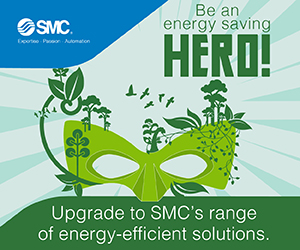Saving through smarter energy use – in three steps by Ben Waters

@AuManufacturing’s Saving through smarter energy use series is coming to an end. Here Ben Waters offers three simple steps to reducing your energy costs.
Australian manufacturers face the twin challenges of high energy costs and the need to decarbonise their operations and demonstrate a path towards net zero emissions.
A ‘Reduce, Displace, Replace’ strategy can neatly address both challenges.
We will concentrate on electricity here but note the opportunity to increasingly electrify gas loads to replace direct combustion of an increasingly-costly fossil fuel with inexpensive renewable electricity.
Reduce means energy efficiency: Improving energy efficiency is a ‘no-regrets’ measure and first step of any energy strategy, as it reduces both cost and emissions.
Try to use as little energy as possible to achieve the task at hand. Look for opportunities to use less through behaviour change, facility design and equipment selection.
Behaviour change can often yield up to 20 per cent savings with no capital investment.
Other low-hanging fruit may include replacing existing lights with LEDs, which often offers a payback of two years or less, with larger gains possible using variable-speed drives, efficient compressors and HVAC equipment, and by replacing gas heating with electric heat pumps.
Displace means using locally-generated instead of grid-supplied energy, typically through on-site renewable generation and storage.
Look for opportunities to maximise the solar PV capacity installed behind each meter at each site, and depending on load profiles it may be able to increase this capacity using battery storage.
The business case for a battery used solely for shifting solar generation to the evening is rarely acceptable, but may become so if the battery can also be used for reducing network peak demand charges or providing critical power backup instead, or as well as, diesel generators.
Replace means buying grid renewable electricity: this can be cheaper, and offer greater long-term cost stability, than business-as-usual electricity procurement.
Manufacturers are now able to access the low generation cost of large-scale, new renewable projects directly, and this is bringing savings and long-term cost stability.
Examples include ANCA, BlueScope Steel and Molycop and these offtake agreements help bring on the next wave in renewable generation that will keep electricity prices lower for all.
Energy should no longer be seen as a commodity to be purchased at lowest cost, but as an opportunity to help achieve a sustainable, low-cost future which allows manufacturers and their stakeholders to prosper while increasingly living within their local means.
Ben Waters is co-founder and strategy director of Presync, a business established to design, deliver and operate local energy and water systems for precincts. He has a distinguished history across business, including as commercial director and director of ecomagination at GE Australia. Ben is a past Chair of Sustainable Business Australia.
Picture: Ben Waters
Subscribe to our free @AuManufacturing newsletter here.
@AuManufacturing’s editorial series – Saving through smarter energy use – is brought to you with the support of SMC Corporation.
Topics Manufacturing News Technology
@aumanufacturing Sections
Analysis and Commentary Awards Defence Manufacturing News Podcast Technology Videos







